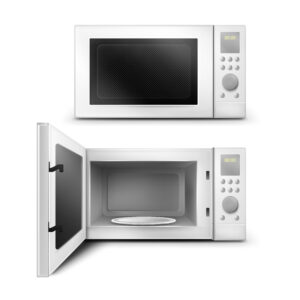Researchers have been researching into the use of lasers in dentistry teeth whitening price in Lahore since the early 1960s, when the field was first established. Practitioners used ruby lasers to treat their patients at the beginning of their careers. It was necessary to ablate the enamel of the teeth with laser pulses in order to remove defects and stains from the teeth. However, there were concerns about the possibility of heat causing damage to the tooth’s internal structure. The arrival of CO2 and solid-state lasers made it possible for practitioners to explore and determine the most appropriate laser for a variety of applications teeth whitening price in Lahore.
Lasers are being use by an increasing number of dentists to treat both hard and soft dental tissue. Lasers are use to remove photosensitive molecules from the surface of the tooth, a process known as “photobleaching,” to achieve teeth whitening results. When used to photobleached pigmented materials, lasers are capable of destroying the color centers of the materials in the process.
This is solely for the sake of appearances. By substituting solid-state Er:YAG and diode lasers for conventional CO2 lasers, significant reductions in terms of heating and collateral damage can be realize. On the other hand, the interaction of widely used lasers with dental tissue, as well as a number of practical difficulties associated with their usage, are thoroughly investigated in this research.
Photobleaching
Photobleaching is the process of removing the color centers from chromophores in order to make them more transparent by the use of light. Colorful compounds that have a light-generating domain that can seen with the naked eye are know as chromophores. The color core of a beta-carotene molecule can seen in the figure to the right of this paragraph. The color is due to the structure of the long red conjugated double bond.
Which is responsible for its length. By oxidizing the alternating double bonds that make up the color center, it is possible to destroy the color center completely. It is common practice to use bleaching gels, such as hydrogen peroxide, to remove stains from clothing (H2O2). When exposed to light, H2O2 decomposes, releasing a highly reactive oxygen free radical, also known as an oxygen radical, into the environment. Single bonds and alcohols are form as a result of the breakdown of double bonds into single bonds and alcohols. Because of the bleaching process, the color center of bleached compounds has been decrease teeth whitening price in Lahore.
How to Photobleached Teeth (with Pictures) (with Pictures)
It is possible for dental photobleaching to occur in two different ways. As previously stated, laser energy can cause dissociation by heating up hydrogen peroxide in the first case; but, in the second case, laser energy can directly cause dissociation by heating up hydrogen peroxide in the second case. Currently, the employment of thermal procedures to regulate free radical effects is preferer over other methods.
The most important properties sought after in photobleaching lasers are selective activation and minimal oral tissue damage, to name a couple of examples. Initial selective activation techniques relied on the use of plasma arc lamps and CO2 lasers, which did not require the application of gel. Damage to dental tissue was a risk, according to the report. It was decide to counteract this impact. By employing hydrogen peroxide gels in conjunction with laser wavelengths. That did not cause considerable absorption in tooth tissue. Because they cause the least amount of damage to oral tissue. Er:YAG and diode lasers are the most often utilised lasers in dentistry.
The Er:YAG laser is use for photobleaching
Photobleaching is possible using Er:YAG lasers operating at a wavelength of 2940 nm. As long as the energy of each laser pulse is less than the ablation threshold of dental tissue. Which is 3.5 J/cm2, there will be no harm caused by the laser pulse. This wavelength is also optimised for thermal. Vibrational excitations of the gel rather than excitations of the tooth tissue itself. Which is a significant advantage. Thermal photobleaching keeps heat and free radicals trapped inside the layer. To be destroy, and only a limited number of them make. It to the enamel layer to cause damage to the enamel layer.
It is necessary to utilize lasers that photobleached
As an alternative, photobleaching from the visible. To the nearinfrared spectrum can be accomplish with diode lasers. They outperform solid-state lasers in terms of size and setup. And they are less expensive than solid-state lasers in terms of cost. It is necessary. To exercise caution in order to prevent exceeding the ablation threshold of tooth. Enamel since higher wavelength increases heat absorption by dental tissue. Diode lasers, on the other hand. Can be utilize for soft tissue surgery, according to the manufacturer. Because these lasers are only marginally absorbed by dental structure. Soft tissue surgery can be perform in close proximity to enamel, dentin. And cementum without causing damage to the tooth structure.
Conclusions
Infrared images of Er: YAG and a diode-based dental services in lahore heating system are show on the right side of the screen. It is not possible for the Arability YAG’s to reheat the peroxide gel to have any effect on the enamel. Diode lasers, but, cause the spread of the entire tooth tissue, including. The gel that has been place to the surface of the tooth.



More Stories
Surviving the Heat: Effective Strategies to Handle Heatwaves and Stay Healthy
As you get aging, these tips might help
Reduce the Harm Caused by Anxiety